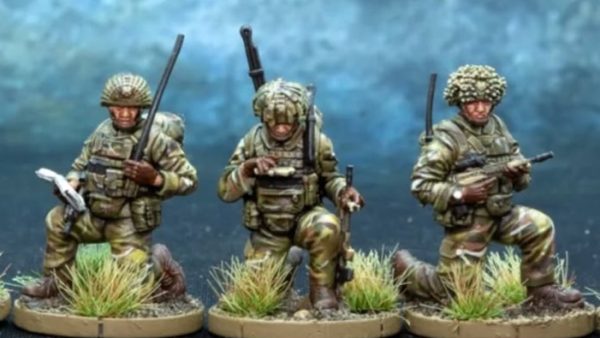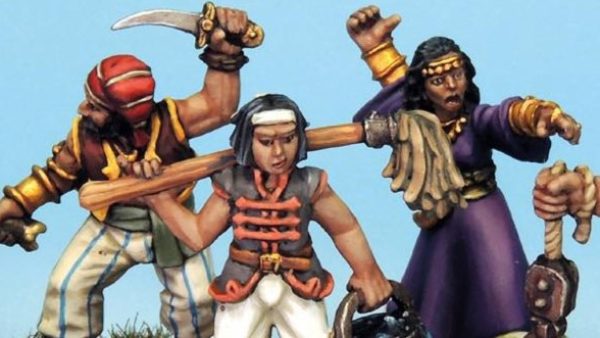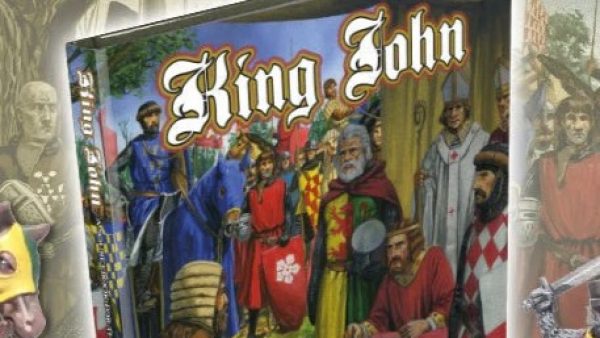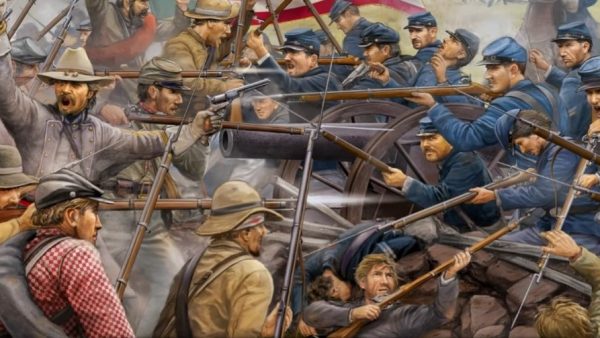Home › Forums › News, Rumours & General Discussion › There is no place for (armoured) vehicles and fliers in a 28mm skirmish game?
Tagged: food for thought, game design, rules, skirmish games
- This topic has 58 replies, 15 voices, and was last updated 4 years, 7 months ago by
 limburger.
limburger.
-
AuthorPosts
-
April 24, 2021 at 11:09 pm #1639353
Tanks are used all the time in ’28mm scaled’ scenarios. Bolt Action actually nicely limits you in many ways to how many and of what kind. If you want to play tank on tank, you use Tank War rules, but if you want to play through a town and you buy a massive tank then you have no infantry to support it. At it’s core Bolt Action is a ‘platoon’ level game. Flames of War is a ‘Brigade’ or ‘Division’ sized game. Bolt Action isn’t a ‘squad’ level game (though they do have rules for it, I think). Here’s some proof that tanks are used in tight quarters;
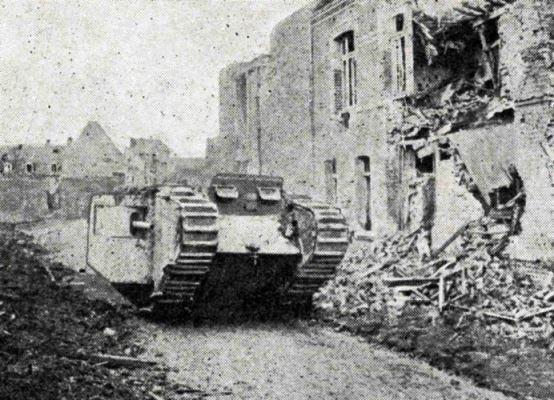
WW1; the first tanks.
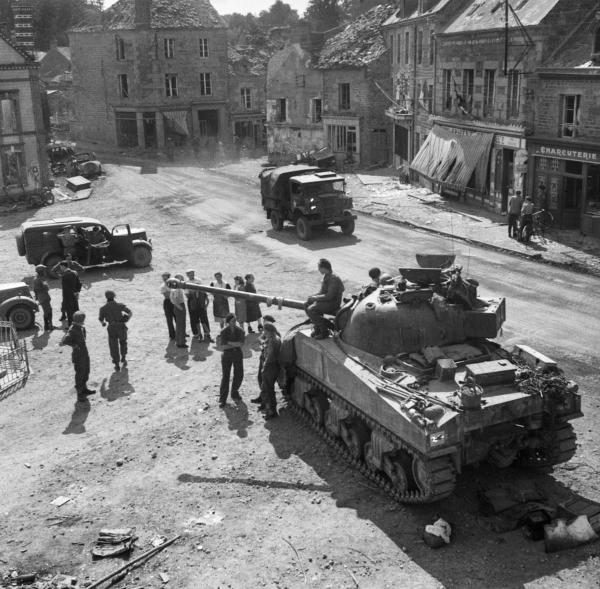
WW2 with infantry to back them up because everyone had learned by then.
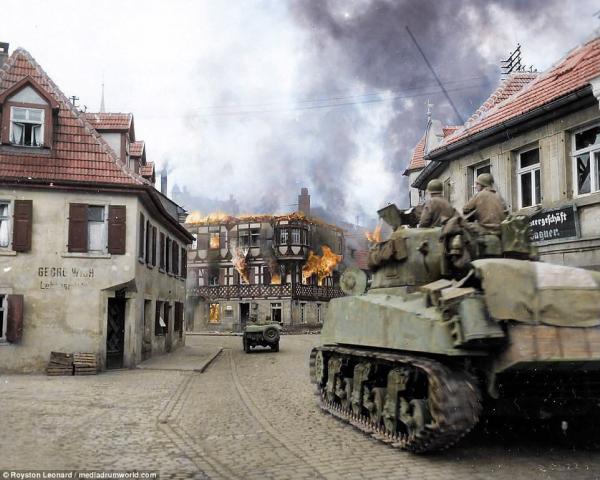
WW2 colourised.
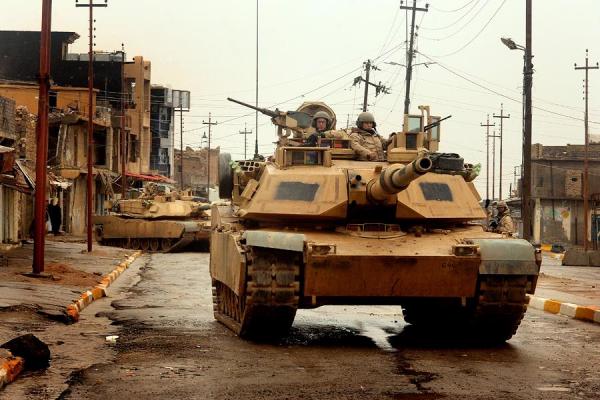
Modern War.
Bolt Action isn’t a ‘skirmish game’. It’s a ‘platoon’ level game. Platoons get support. Yeah giant Big Cats are scary to come up against, but if we’re going with realism the Germans dug in panthers to use as fixed guns. When tanks ran out of fuel they used them as static guns. No tabletop game is going to be 100% accurate to a real life war, which is definitely a good thing. Each game has it’s merits and it’s flaws. I think we’ve had the conversation many times over the years regarding the ‘perfect’ game and it just doesn’t really exist. Bolt Action, for me, is just the right kind of accurate vs. enjoyable. For others it’s not. That’s fine with me and to each their own. 40k is a fun game to me and I actually enjoy the simplification over the years, not everyone does and that’s cool. Remember that you can play any edition of any game with any house rules you want. You’ll find people who’ll be down for that. Just remember that anyone who wants to replay Waterloo and try to win as Napoleon can only do so if the rules of the game don’t 100% match reality, because if they did Wellington and Blucher would always win.
I used to work around reenacting groups and I tended to find they fit into several broad camps. There were those who took accuracy to insanely accurate levels, there were those who took no effort at all and just wanted to shoot a musket off. There were those who understood limitations of accuracy in regards to practicality, and there were those who just wanted to get ‘close enough’. Tabletop really isn’t much different when it comes to historicals. Some of us want 100% accurate paint jobs and camos and uniform markings, some of us want it to look right but not be too impractical to pull off, some of us want the right general look, and some want to paint their US Paras in bright pink jackets. Some people want the biggest things with the killiest toys, some people want a nice mix of things, some people stick strictly to the Order of Battle for that given war or battle. Each of those people gets the same enjoyment, and that’s really what it’s all about at the end of the day. Some people might not like you sliding a Jadgtiger onto the field because they only brought a 6-pdr field gun with them, someone else might think ‘this is a challenge’. If you think about it, the gunner of a Sherman V in NW Europe would not have gotten out of his tank, walked over to the King Tiger and say to the commander “I’m sorry mate, but this is not on! You’re clearly not playing fair by bringing a bigger gun!”.
April 25, 2021 at 10:17 am #1639415There are no games that emulate reality 100%, all rules are an abstraction of reality and whether you like those abstractions is entirely a subjective opinion. No set of rules is a true simulations of the actual fighting; the simulation comes from the decisions you make in response to outcomes within the game. It doesn’t necessarily make one set of rules “better” than another. I would say it’s possible to argue that some games better reflect reality to certain ways of thinking but ultimately that is also a subjective opinion because it’s not really possible to compare cards, tables and dice rules to live action; that’s literally just a preference for specific game mechanics. All games have strengths and weaknesses, things that they handle well and things that they handle poorly but that doesn’t make one set of rules a “wargame” and another set of rules a “game”. Warhammer 40k is as much a wargame as any other set of wargaming rules.
April 25, 2021 at 11:04 am #1639416If the scenario on the table, or the make-up of the forces, is so divergent from what might have happened in reality, then you are playing a sci-fi game with historical miniatures. At this point no decisions you make are in any way a simulation.
April 25, 2021 at 12:56 pm #1639438No system is going to capture the reality of command, because we’re doing things turn based when in reality things happen at more or less the same time. Alternate activations and some sort of limited orders are probably as close as we can get.
However … that’s not the point of this topic.I was only using Bolt-action as an example.
Whether that system or the scenario should be classified as ‘realistic’ in any shape or form is not part of this discussion.To me the challenge of using any type of armoured vehicle or flying unit is the same regardless of system.
And I think it is one that at least deserves some thought on the matter.I think that for all intents and purposes Bolt-action at least prevents players from fielding more than a single tank so the unit count isn’t “unrealistic” for the style of engagement that could happen at this scale.
Starwars Legion also appears to have enough restrictions to stop it from getting out of hand.I do think that the competitive nature of those systems may be forcing players to add stuff to their army list that they aren’t comfortable with just to have a chance at competing.
40k … where even GW didn’t bat an eye when they introduced baneblades and knights to the game … I’d consider it a lost cause in desperate need of fixing just to bring basic infantry back into the game as the core unit as opposed to the elite of the elite and their big guns that (appear to) dominate the marketing material.
Historical games tend to have the advantage, because there usually is a good reason why unit X could or could not be used.
Fictional settings don’t have such things (unless they’re closer to alt history).To me the ideal middle ground would be scenarios that at the very least suggest interesting/challenging army lists to use.
Of course all of this with the standard disclaimer : your game / your fun
All I want is for both designers and users of systems to think about how and why they’re doing stuff within their game at this scale.
Don’t assume the rules as written are set in stone and can’t ever be changed.
Although this does require players having access to the same version of the rules … (I dislike ‘living rulebooks’ but that is another topic).April 25, 2021 at 1:04 pm #1639439I think that for all intents and purposes Bolt-action at least prevents players from fielding more than a single tank so the unit count isn’t “unrealistic” for the style of engagement that could happen at this scale.
Unfortunately that is not the case, given that you can take more than one platoon. I have personally seen a player fielding a list of four german platoons, each composed of just two squads of five green models, so that he could field four Flammpanzer III
April 25, 2021 at 8:39 pm #1639547There’s always people who game the system like that, which is why most competitive scenes will restrict the number of platoons (for Bolt Action) or the number and/or type of detachment (for 40k) and so on. I imagine there’s even people who try and ‘game’ Napoleonic games by spamming out 10 rifle regiments for a British Army when they only had 3 battalions of 95th, 1 battalion of 60th, I think two battalions in the KGL and then various companies of rifles like the 7th Fusiliers. I think it’s unfair to blame a game system for an individual players choices.
To go back to limburger’s original point it is sometimes a little ridiculous to think that a Jagd Tiger has a place in a game of a couple of green minimum squads just to fit it in, but if you’re stretching out to larger games of, say 2000 points then it’s more reasonable. Also more reasonable to expect an extra platoon. You could also argue at that point you’re reaching the limit of scale in that system. But it’s doable, if you fancy playing that game. Aircraft are a bit trickier, just because of what they are/do on a battlefield. We could represent a strafing run with a template and have the same effect. But at the same time we all want to hold the plane and make the whoosh! sounds, right? There’s always a question of scale, but also fairness. I swear that the Tiger in Bolt Action that is 666 points was only pointed as such for a laugh and is not an empirical pointing scheme, but who cares? A Tiger is something you pick up because it’s cool, or you saw it in a book, or in a movie. Same thing with an Imperial Knight for 40k. I would say that the bigger problem here is a player who’s ‘done the maths’ to get the most efficient way of winning a game. Someone who’s playing the meta. That will happen with any game system because there’s always someone who has to win as much as possible. If you’re playing a friendly game and you want to pull out the big toys, then just ask you opponent if he minds. Most normal people will probably ask if they could use their special mini as well. My younger brother has an army of Imperial Knights, simply because he loves the models and he’s done an amazing job of painting them. If he asked me if he could play against me with them, I’d be cool with it because it’d be something I knew was coming.
This is an incredibly long way of saying ‘friendly games should have friendly atmospheres and if someone want to be a dick, don’t play with them’.
April 26, 2021 at 2:57 am #1639639I hate tanks in Bolt Action and never take them. They take up a lot of points, can be killed in a single shot and it just further adds to the whole “mess of nonsense” that most games like Bolt Action become where you have Platoons that are just crazy.
Not even getting into Lords of War being made standard in 40K…
April 26, 2021 at 7:42 am #1639653SW:Legion has had issues balancing vehicles and flyers in the game (amongst many other issues) that had led to a constant churn in the meta. I think of a skirmish game as one where there is a lot of terrain on the table. This will limit the effectiveness of vehicles and flyers.
Mostly it seems you end up with a games that plays out much the like end fight in Fury…and nobody really wants that level of stupidity on the table surely?
April 26, 2021 at 9:07 am #1639677I think it’s unfair to blame a game system for an individual players choices.
My point is that games that are geared towards competition will always be exploited by players and this, to an extent, is built into the system itself. These games cater towards one specific target kind of player for whom making the most efficient list is 70% of the game and as such do not really do anything to fight this trend: adjustments simply occur when there is an outcry in order to slightly change the meta. And this is what I call a game rather than a wargame.
April 26, 2021 at 11:00 am #1639717Just because something CAN be done doesn’t mean it WILL be done. Just because a game supports “balanced” play (I use quotes because all games are imbalanced to some degree, even chess) doesn’t mean it can’t be used to play asymmetrical scenarios instead. It’s very rare that the mechanics of a game are entirely dependent on the list building rules to the point that the list building rules can’t be ignored to support custom scenarios. In most systems, the list building rules are, to a degree, separate from the game rules. The game rules explain how to resolve actions, the list building rules are there specifically to give a guide for creating “balanced” forces should you feel you need them. The list building rules are dependent on the game rules, the games rules are not dependent on the list building rules. It’s also the list building rules are also where “exploits” are most likely to occur by competitive players when they design their lists. That doesn’t mean people playing narrative scenarios will do the same thing
April 26, 2021 at 5:48 pm #1639901People who play to win at any cost will find ways to exploit lists and rules regardless of how balanced such things are.
They will do so with systems that aren’t designed to be competitive …To summarize so far :
– big vehicles can work … they may need bigger tables
– flying vehicles are a challenge that bigger tables won’t solve;
– helicopters and their fictional equivalents can work so shouldn’t be a big problem
– list building rules and point limits help keep them to a “realistic” ratio
– players with a competitive focused are never going to ignore an exploit when it is available …I suppose terrain may be a bigger factor in making these (big) vehicles behave in a way that is ‘fun’ for both players.
So maybe … the key here is not so much the rules but the lack of scenarios that teach people how to handle vehicles ?Or maybe the better question is :
Who has the ‘leading role’ on the battlefield ?
Infantry or the big monster/vehicle ?I suspect one could make a game where the vehicle is the star and the infantry is merely there to serve its needs and not the other way around.
Such a system probably would have more focus on how a vehicle operates and how (in)vulnerable it is in a given situation.
It’s easier to create ‘special’ behaviour, because players will be focussing on their big monster by default.
Trying to do this in a game that doesn’t favour the big shooty thing only creates problems when you do prioritize it.I suppose ‘Adeptus Titanicus’ is doing exactly that … the big stompy things are the star players and thus they get all the ‘fun’ stuff. I know it’s not exactly a ’28 mm skirmish’ game, but when you look at the abstract it isn’t *that* different from a skirmish game with a focus on hero characters and their disposable cannon fodder …
April 26, 2021 at 6:45 pm #1639903April 26, 2021 at 6:53 pm #1639904@piers With all the fantastic work at 20mm scale you’ve put out over the years, mate, I think that’s obvious. 😛
April 27, 2021 at 10:17 am #1640050You can play 40k with all armour lists, Imperial Knights for example. It’s been a very long time since I actually played 40k or built a list so I don’t know how viable that is with other factions but I at least see a narrative opening for a tank heavy Imperial Guard list. Sure, you won’t have that many and if they can’t take and hold objectives then you will be limited to very specific, perhaps even custom scenarios, but I think it could still be a fun army.
At 28mm an ambush on a column of tanks in an enclosed are like a ruined city could be an interesting game, regardless of setting or rules system
April 27, 2021 at 1:33 pm #1640114I think such an ambush scenario does require scenario specific rules to be fun.
Altough some systems might handle it better than others without tweaks.@piers it’s not about WW2 or 28mm.
In fact I’d argue that at an abstract level it is about how ‘big’ units can dominate the game.
To solve that puzzle you’d have to look at what the game (and the players) need to do to maximize the fun.Do you need special rules to highlight how vulnerable the monstrous unit is ?
Or do you need rules to show that the rest of the army is there to support the monstrous unit so it feels more rewarding to use ?Fun is had when players and system match in terms of ideas and design philosophy.
So if the idea is ‘realism’ then Bolt-Action wouldn’t be the system to pick for such a scenario, unless you house rule it to hell and back.
Likewise you can’t take Battlegroup and expect it to function at a ‘beer & pretzel’ level where you play fast & loose with ‘realism’.
That’s not to say that setting a Battlegroup army list vs one that has a T-Rex or King Kong couldn’t be fun. -
AuthorPosts
You must be logged in to reply to this topic.



































![Very Cool! Make Your Own Star Wars: Legion Imperial Agent & Officer | Review [7 Days Early Access]](https://images.beastsofwar.com/2025/12/Star-Wars-Imperial-Agent-_-Officer-coverimage-V3-225-127.jpg)






